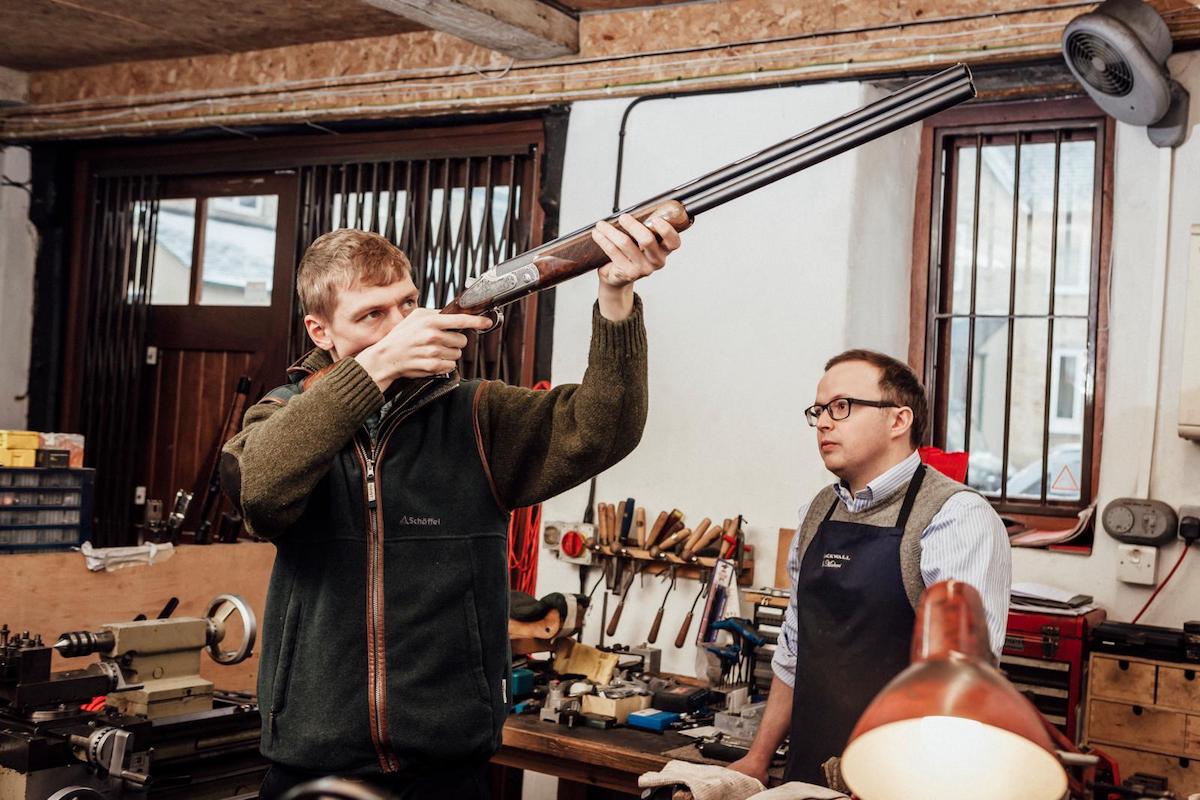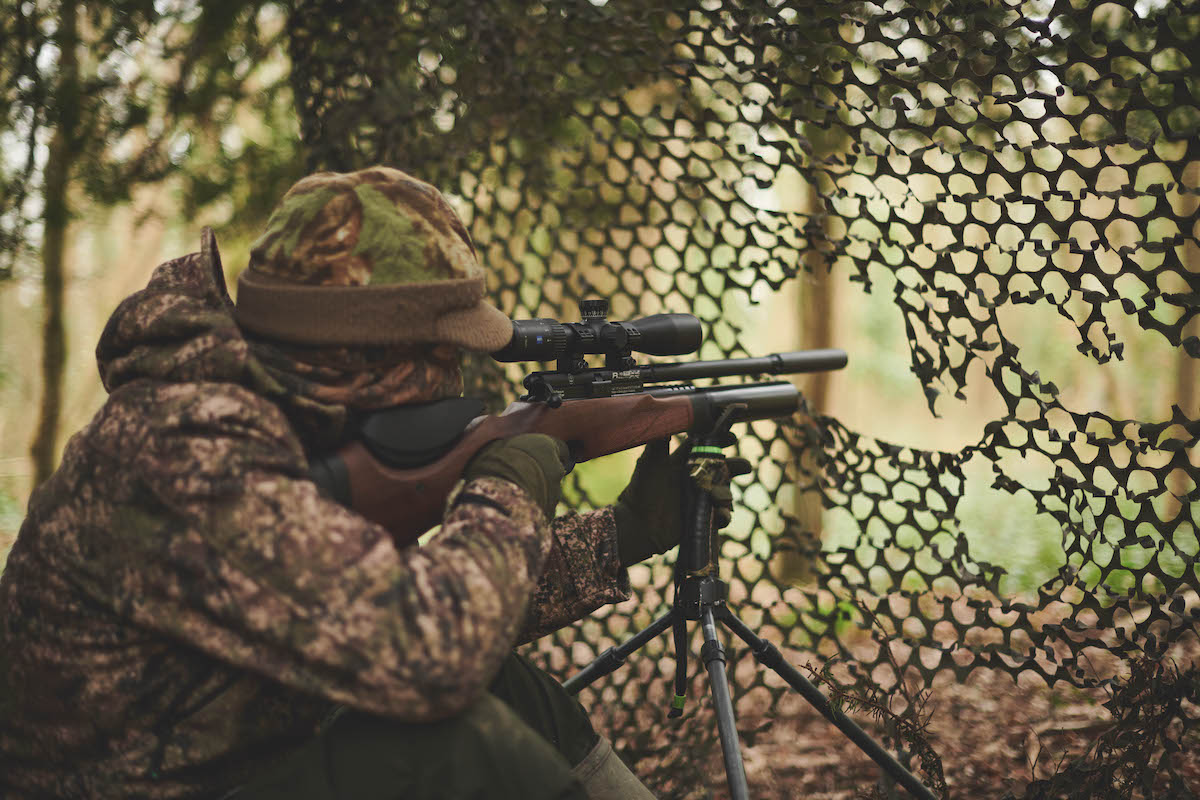Diana Model 240 Classic – an ideal entry-level airgun
Phil Hooper examines the Diana Model 240 Classic, an entry-level rifle in the German manufacturer’s range, and likes what he finds
My eldest grandson, Conor, had outgrown his Daisy Model 105 BB airgun, even with a longer stock I made for it. So for his birthday I promised him a new replacement air rifle. I did a little homework, but did not suggest anything in particular as I wanted it to be his choice, and a trip to see Bob at City Air Weapons in Birmingham provided several options.
Bob is always really helpful, and has a huge stock of airguns with almost every conceivable type, make and model on offer. Although fairly tall, Conor is quite slim and did not want anything too heavy. He fairly quickly selected the Diana Model 240 Classic T05 in .177 calibre, and I was pleased to note that it seemed to fit him well, being of ideal proportions to suit his build, and weighing in at just 5.7lb.
Although the budget would not have run to a PCP, I think that learning to shoot a springer accurately is great for developing good technique and follow-through. Conor has no desire to hunt, so there is no danger of wounded prey as he refines his technique. I have heard people argue that the ease of shooting accurately with a PCP encourages a youngster, and I understand that.

The more budget-orientated Diana Mod 240 Classic T05 may be a traditional ‘no frills’ type of air rifle, but it still has great fun potential
However, it is so easy to develop and get away with bad habits with a PCP. If you are never going to shoot anything else, then perhaps that does not matter too much. However, as a young RAF Air Cadet he may well go on to shoot centrefire rifles, where follow-through is essential to accuracy just as it is with the humble .22 rimfire round. Once bad habits are instilled, it is much harder to correct them than to learn good technique from the start.
The German-made Diana air rifles have a great heritage and reputation, but are lost in the shadow of competing products, so I was rather pleased that he chose a Diana. My own early shooting career also featured an air rifle made by Diana (Mayer & Grammelspacher), even though it was branded Original.
The classic Diana
So what of this Diana? It certainly lives up to the ‘Classic’ description, being of a traditional appearance and construction. It’s a no-frills, junior airgun suitable for an adolescent, but also fine for plinking even as an adult, courtesy of a well-judged 13.5in length of pull. The ambidextrous stock is devoid of chequering, but has a dull satin finish which is not too slippery. It is made of beech and stained a walnut colour.
Pleasingly, the forend extends well beyond the breech to suit those who like a more forward grip with their leading hand. Although having no cheekpiece, the comb appears to position the head reasonably well with the standard open sights or rather better with a scope.
The open sights provide a good sight picture, although the fibre optic enhancement is probably of more benefit when grandad takes a turn than for younger, sharper eyes! There were small issues with the rear sight which I shall come to later.
The overall length of the rifle is 40in, with the barrel being 16.5in long. The barrel needs a sharp downward tap to overcome the very positive lock-up of the sprung ball bearing detent arrangement. Cocking effort is quite low at under 20lbs and the action smooth, although the last part of the barrel travel is very slightly less so.
The trigger is the T05 unit, which has a two-stage action and, although adjustable, was very good out of the box and so has been left alone. OK, so it’s no HW Rekord unit, but it is predictable with a short first stage and a light, crisp release at under 2lb.
The low cocking effort does mean that this rifle is no powerhouse. It delivers 6 ft-lb, and in .22 the trajectory would be pretty loopy. However, in .177 this power level is sufficient for accurate target shooting out to 25 yards and for toppling tin cans at 40 yards-plus. The firing cycle feels quick with subdued spring twang and only mild recoil. Nothing there to induce flinching in a young or inexperienced shooter.
Shooting in style
We found that this rifle shot well with H&N Field Target Trophy, a favourite pellet of mine. (Click here for our review of the H&N Field Target Trophy Green) A typical five-shot string gave an average muzzle velocity of 565.6 ft/sec, and with a pellet weight averaging 8.55gr (the box label stated 8.64gr), muzzle energy was 6.1 ft-lb, offering good consistency. I had expected that a lighter pellet may have delivered an increase to the muzzle energy and tried RWS Hobby at 6.93gr. However, average muzzle energy was slightly lower at 5.7 ft-lb, and consistency of muzzle velocity was poorer. So H&N FTT is the current choice.
For a budget airgun, build quality is exemplary. Wood-to-metal fit is good, and metal preparation and bluing are of a high standard with no machining marks evident, even where the scope mount grooves are milled into the cylinder. Still, this 11.7mm wide dovetailed area has no holes drilled for a scope mount recoil stud. However, the grooves are closed, so that if the rear mount is secured at the extreme rear end of the grooves then the scope should not migrate backwards, but scope eye relief may make this positioning difficult.
That challenge is for another day, after use with the open sights has been mastered.
The breech pivot through-bolt is adjustable, should wear occur to this critical joint, but occasional lubrication will ensure that this mechanical issue is many thousands of shots away.
All of the other main screws have Pozidriv heads, making it easy to carry out stock removal and home maintenance.
A few adjustments
There is some plastic used in the construction of this rifle, but it is good quality, fairly robust and helps to keep the weight down. The front sight and protector assembly, grooved trigger and trigger guard, rigid chequered butt plate, cylinder rear-end cover and safety catch assembly are moulded in high-grade plastic.
The safety catch sets automatically on cocking the rifle, is positive, well-placed for easy disengagement and re-engagement, and does not prevent the rifle from being uncocked if a shot is not to be taken. Conor soon got the hang of this without too many shots attempted with the safety still on!
The rear sight is well-made in metal and plastic, and has a nice positive clicking action for windage. However, there were two minor faults. Firstly, the elevation thumb wheel, with numbers zero to nine imprinted, simply rotated with no clicks, and secondly the rear of the sight could be moved side to side by about ¼mm. Not a lot, but this could lead to an inaccuracy of almost ½in at 20 yards.
Investigating the second problem, I found that although the sight mounting screws were tight, the tapped holes in the breech block were not deep enough, so the screws bottomed out before the sight block was fully clamped down. A very small washer (0.50mm thick) under the rear screw head resolved the issue. Next, with the vertical adjustment thumbwheel unscrewed, it was apparent that there were notches on the underside of the wheel, and two recesses in the sight block, suggesting that a small ball bearing in the forward recess would give the desired clicking action. A 3mm diameter ball bearing was found, fitted, and proved successful in achieving a positive ‘click by click’ adjustment.
The design of the sight is such that clumsy handling of the gun, and hence accidentally pushing the rear sight downwards, could enable the ball to pop out and be lost. This may have happened at some point before we bought the gun, and must now be guarded against by taking care as I don’t have another 3mm ball bearing! So, a couple of small but important home modifications.
Time will tell concerning the level of accuracy that this cracking little rifle is capable of in Conor’s hands, but he loves the gun and that is a really good starting point. I think he made an excellent choice with this Diana and am hopeful that he might go on to become as passionate about being an airgun shooter as his grandad is!












